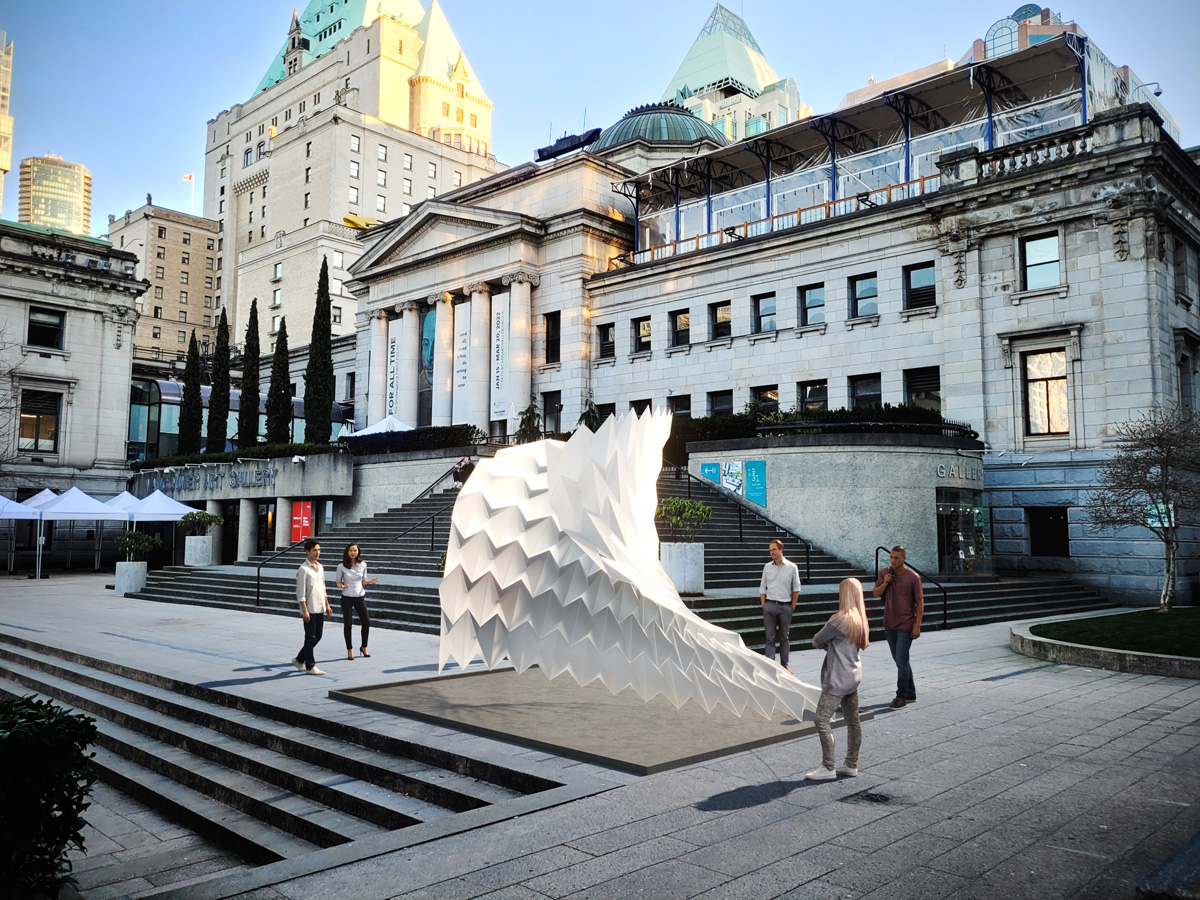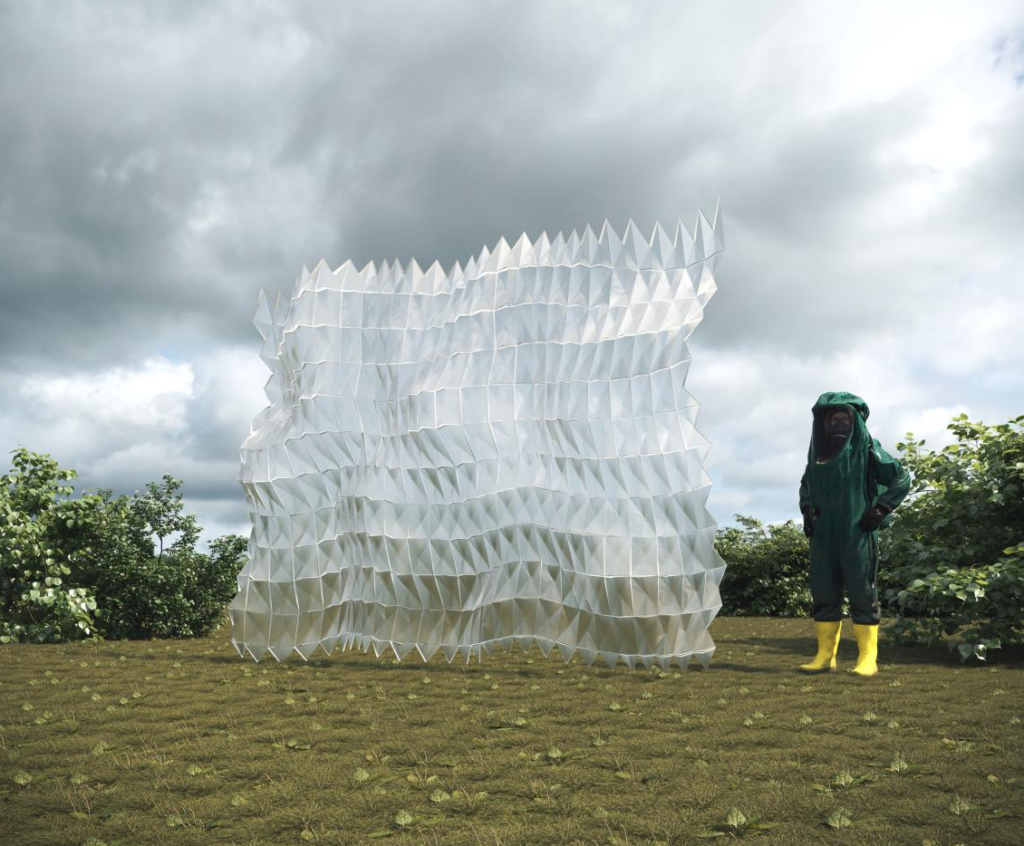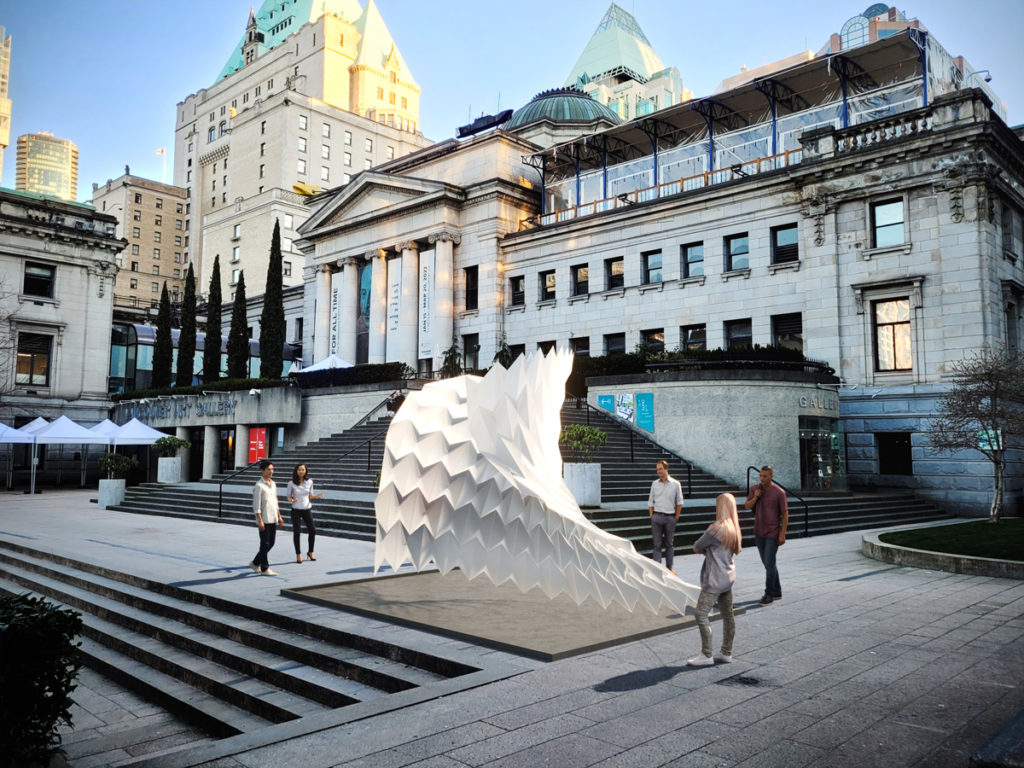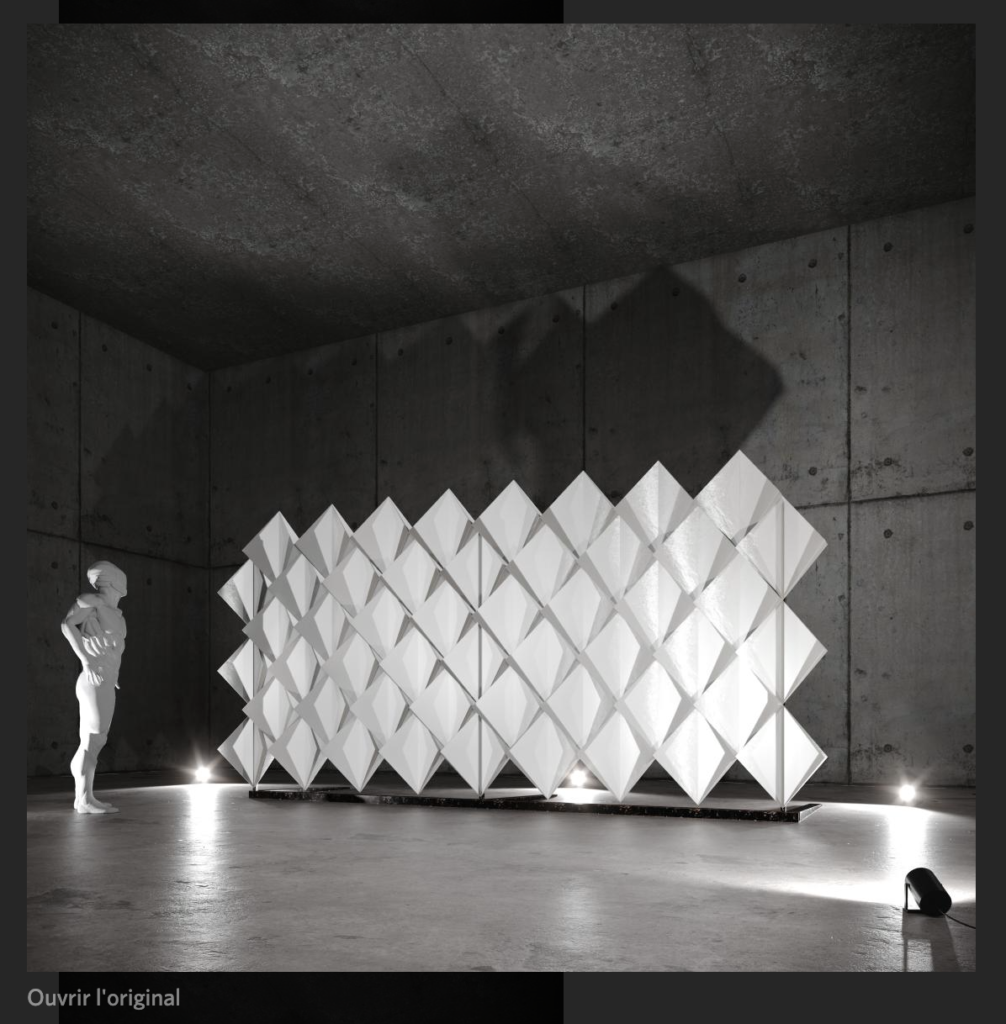
Filter by Columns


The combination of art and technology is a dynamic process that utilizes the emotional power of art intertwined with creative engineering tools to create awareness and address critical social issues. I am a part of the ATTA Society (Activism Through Technology & Art), and we are currently building an art installation for environment protection awareness.
The combination of art and technology is a dynamic process that utilizes the emotional power of art intertwined with creative engineering tools to create awareness and address critical social issues.
I am a member of the ATTA Society (Activism Through Technology and Art) in Vancouver, Canada. We, a team of engineers, artists, and environment lovers are currently making an origami inspired lifesize mechanical art installation. The mechanical movements of this structure are designed in a pattern to replicate the human lungs breathing pattern. The purpose of this art and technology activism project is to raise awareness on global air quality. The movements of the origami structure shows different patterns of compressions and relaxations indicating the lungs movement during bad air quality and good air quality respectively.
I choose to volunteer as the mechanical design team member of the ATTA Society to contribute towards raising awareness on the consequences of bad air quality. My personal experience of living in poor air quality in my home country in South Asia has been my inspiration to support this project. This art piece will be installed at the University of British Columbia (UBC) to support the ‘Green City’ narrative that Vancouver is currently shifting to. It will be the first of its kind in the city to display the climate action goal – one of the seventeen United Nation’s Sustainable Development Goals.




Activism through art has been practiced for a long time. From using cartoon drawings for political protests and storytelling to street art in the form of murals and graffiti, creative activism has been used as a medium for expressing opinions throughout history. The intervention of technology with art adds a digital layer to activism making it immersive and thus, becoming easier to connect with the audiences.
The core strength of using art as a source for activism and awareness is by capitalizing on its power to trigger human sentiments. By being an art form, the artistic designs leave plenty of room for imagination and persuasion for the audience to derive multiple meanings and create multiple ways to connect with them. Studies suggest that artistic expressions are used to increase human engagement and are a driving force for human rights advocacy and inequality.
According to the activists at the eatART Foundation (Energy Awareness through Art) in Canada, when the social message is being conveyed through virtual reality or a life-size engineering art installation, it increases the success rate of the message to be comprehended effectively by a layperson. The foundation is involved in providing a workspace for artists and engineers to design mechanical art installations for energy conservation awareness.
Mechanical art structures and installations are a common way for activists around the world to trigger human reactions and connect with people to convey their message. The Lamp Bear, a 23-foot canary yellow teddy bear sculpture made by a Swiss activist is a mechanical structure that sits in the foyer at Doha International airport as a symbol of happiness and playfulness. This art installation is installed to ease the travel stress of passengers on long-haul flights. Similarly, the Environmental Sculptures by the artist Jim Swaim are giant animal sculptures at Intracoastal Waterway to raise awareness for the protection of the natural habitat of indigenous birds and fishes.
The massive size of these sculptures helps in gaining attention from the people and sparks curiosity in them to learn more about their purpose and goals. This technique of attention grabbing has been practiced by the activists throughout history. While the resources to make big art installations lacked in the past, artist used human bodies to paint/draw their opinions for the political protests or to raise awareness on social inequality.
The soaring likes and shares on posts within a few minutes of being published on the social media testifies in the power of the social media platforms in making the content viral and reaching a wide audience. Capitalizing on this strength of digital technology, many activists use their social media profiles to create awareness on social and environmental issues.
Danielle Coke, for instance, creates digital drawings to raise awareness on the racism faced by Black Americans. Salome, who runs the Instagram account C.hroma posts digital art and photos of murals with minimal text centered around highlighting the issues of BIPOC. Some of her art work also involves voicing the plight of the immigrants and indeginous people. These artists have social media followings in thousands and their work is shared by people all across the web.
During the COVID-19 pandemic, digital activism through art took the center stage. Global protests like #BlackLivesMatter and Greta Thunberg’s environment protection campaign #ClimateStrikeOnline were moved to virtual events due to social distancing restrictions. Nonetheless, these campaigns attracted huge success from all over the world and millions of activists took part in these virtual events voicing their opinions to support the cause. Artistic posters and drawings trended on social media in solidarity with the causes that made it accessible and easier to connect with more people all across the world.
The success of these protests among other successful digital activism campaigns and the response they receive by captivating the masses indicates the strong potential of using the digital space for activism and awareness.
One of the most underlying issues currently the world is facing is the environmental crisis. To address this crucial issue, the global artists and activists community have been working in different capacities to raise awareness for environment protection and importance of implementation of green energy. After the powerful speech given by Greta Thunberg during the Youth4Climate Summit in 2019, there have been a rise in environment protection art projects including a fusion of both art and technology.
One of the most recent and expansive climate change art installations is the Augmented reality aeroglyphic sculpture formed by a site-specific trajectory made with the Aerocene Backpack by an Argentinian artist Toman Saraceno. He created a permanent and innovative art installation at Maison Ruinart, world’s first and oldest Champagne house to help the public visualize what the difference a single degree Celsius can make in the warming world. The aim of this installation is to free the air from fossil fuels, lifted only by the air and sun and moved by the wind.
The global artists community is gathering support from artistic activism as it emotionally resonant experiences that lead to measurable shifts in power. Moreover, art and technology when integrated together generates critical perspectives in people’s minds about the changes happening in the world. For the artists, activism helps them to notice and reflect upon on different social, environmental and cultural possibilities which leads to inspiration in creating art that would attract the people and persuade for a change for a better future.
The growing social issues of the world need a platform to be addressed at, a place from where it can reach the masses and people begin to invest their time in understanding the issues and developing interest in working towards tackling them. There is plenty of room in the social and environmental issues space for arts and for the power it holds to persuade a change. The activists behind the projects and ventures supporting the social and environmental change are the change leaders who are leveraging the potential of art and technology to move towards a better future.
Creative Activism holds the potential for a better world by capitalizing on the power of the following artistic activism initiatives:
In its most traditional form, art has always been used as a medium to tell stories from the early days. In contemporary storytelling, the use of murals, graphities, and digital art are some of the examples of creative storytelling through which social issues are highlighted. An advanced level of creative storytelling is by integrating art and technology to tell stories. Highly creative engineered structures presents the stories in a more comprehensive and interactive way and also garner more interest from the audiences.
Using platforms with the potential to reach a wider global audience and by harnessing the power of social media, art and activism is changing communities. As soon as a piece of content goes viral, it reaches people who might not have known about an issue or would not be interested in supporting an issue. But with the power of creative storytelling combined with digital technology, captivating art form intriguing change can change the way people think.
In recent times, artistic activism is used to highlight social causes related with diversity and inclusivity. From fighting for the rights of the BIPOC, LGBTQI+, and indeginous people to preserving the environment for the natural habitat for rare flora and fauna, artistic activism is promoting inclusivity and diversity. The meaning of true inclusivity is to fight for a world that is equal for everyone and includes opportunities without any biases towards a particular race, gender, or a community of people.
The art installation that we are creating at ATTA will serve as an artistic expression of a dark reality of climate change and the environmental damage humans are causing to the world. I am an engineer and a writer, and by working on this project I realized the strong power of storytelling that creativity and engineering can bring together to create awareness around issues that people often knows about and but don’t work towards solving them in their daily lives.
Creative activism has been a major source to voice opinions for people from marginalized communities. It was with the help of artistic activism that campaigns such as #BlackLivesMatters were able to receive support from millions of people from all over the world. Despite many major protests and campaigns shifted online during the pandemic, the success of digital activism campaigns did not deter.

Rahma Khan is a travel writer and an independent journalist from Pakistan based in Vancouver, Canada. She uses her travel blog thesaneadventurer.com to share her stories of traveling as a woman of colour. Her work is published in Condé Nast Traveller, Matador Network, Eaters, and Independent UK, among others.
Travel blog: www.thesaneadventurer.com
Instagram: @thesaneadventurer
Twitter: @rahmakhan155